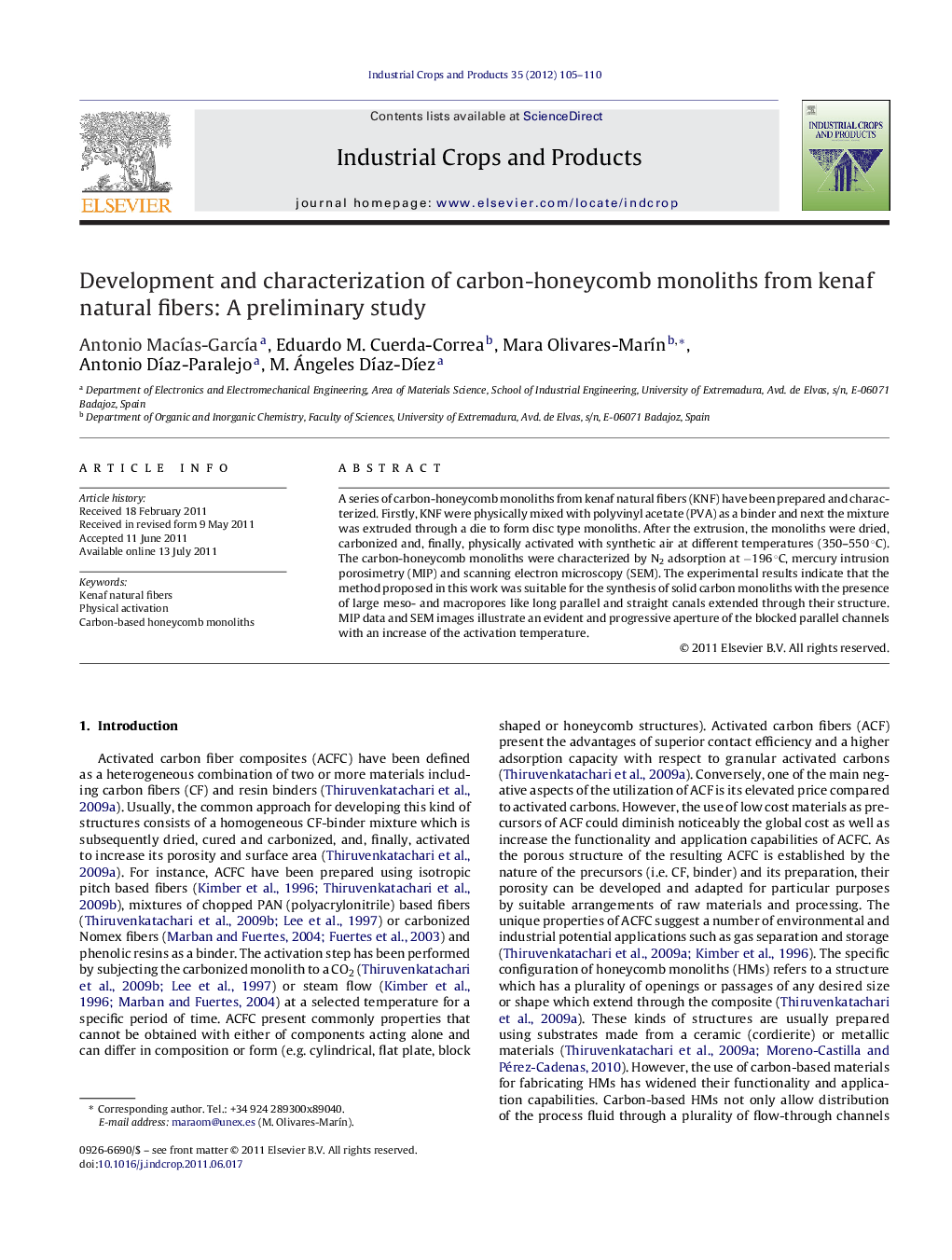| Article ID | Journal | Published Year | Pages | File Type |
|---|---|---|---|---|
| 4514612 | Industrial Crops and Products | 2012 | 6 Pages |
A series of carbon-honeycomb monoliths from kenaf natural fibers (KNF) have been prepared and characterized. Firstly, KNF were physically mixed with polyvinyl acetate (PVA) as a binder and next the mixture was extruded through a die to form disc type monoliths. After the extrusion, the monoliths were dried, carbonized and, finally, physically activated with synthetic air at different temperatures (350–550 °C). The carbon-honeycomb monoliths were characterized by N2 adsorption at −196 °C, mercury intrusion porosimetry (MIP) and scanning electron microscopy (SEM). The experimental results indicate that the method proposed in this work was suitable for the synthesis of solid carbon monoliths with the presence of large meso- and macropores like long parallel and straight canals extended through their structure. MIP data and SEM images illustrate an evident and progressive aperture of the blocked parallel channels with an increase of the activation temperature.
Graphical abstractFigure optionsDownload full-size imageDownload as PowerPoint slideHighlights• Development and characterization of carbon fibers honeycomb monoliths from kenaf (Hibiscus cannabinus L.) fibers. • Presence of large pores like long parallel and straight channels extended through the structure. • Good mechanical stability.
